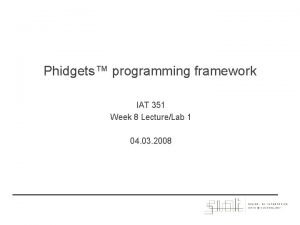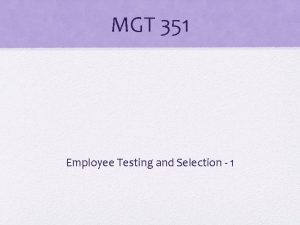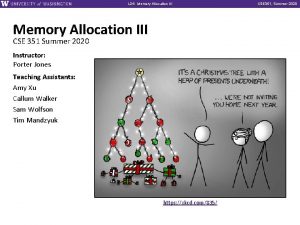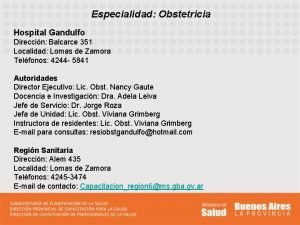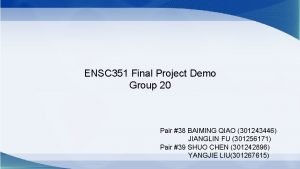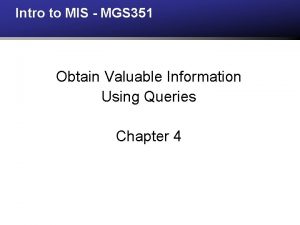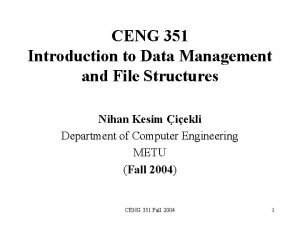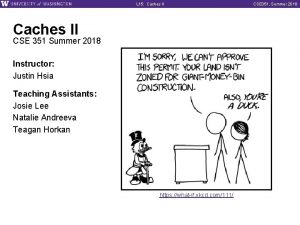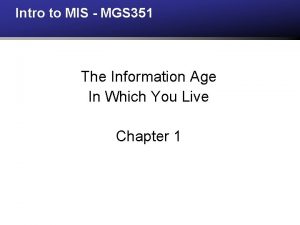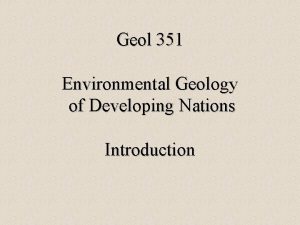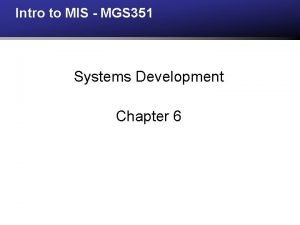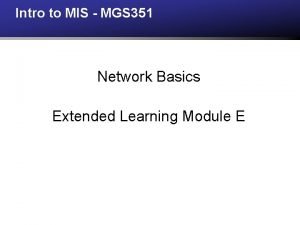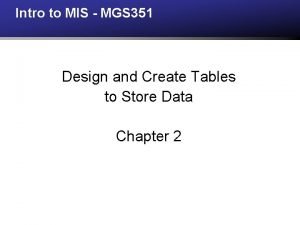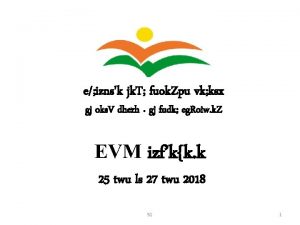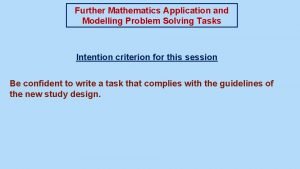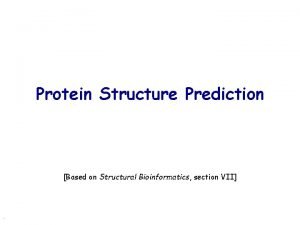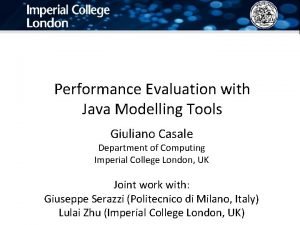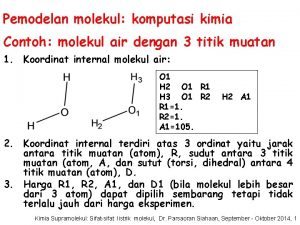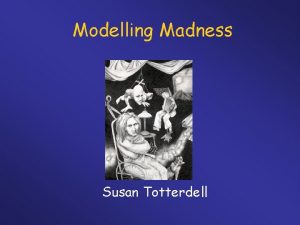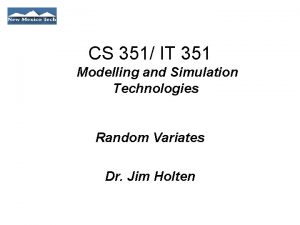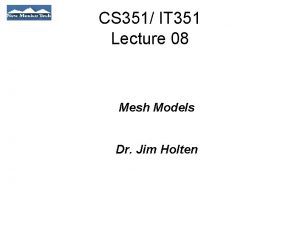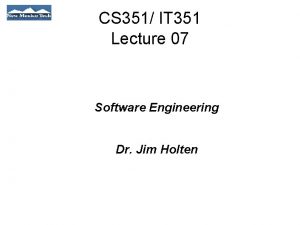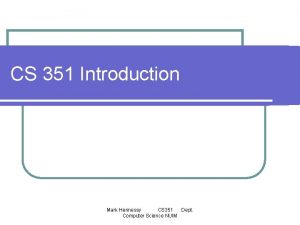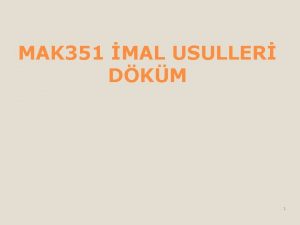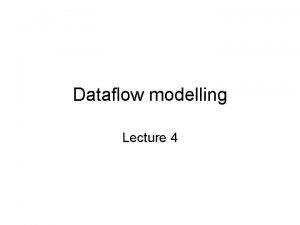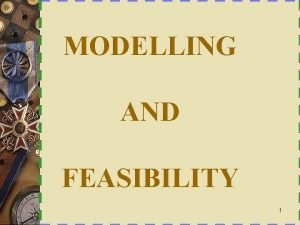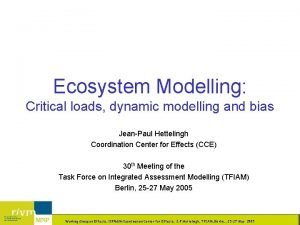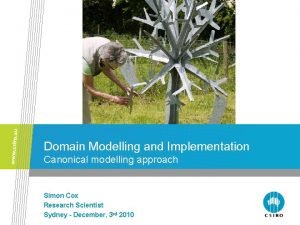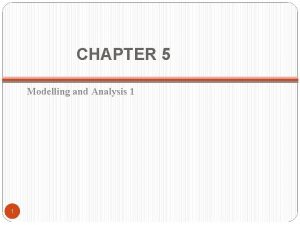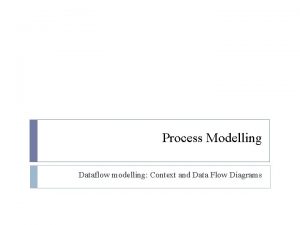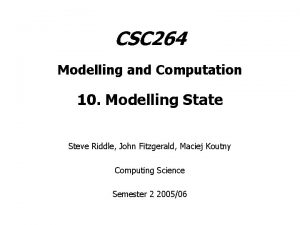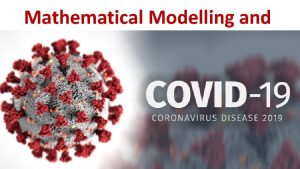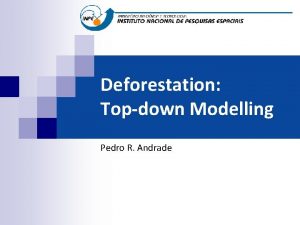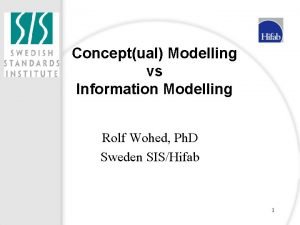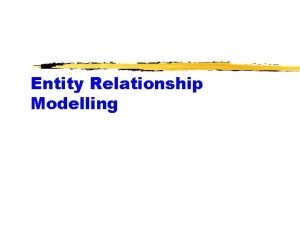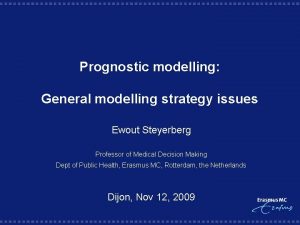CS 351 IT 351 Lecture 05 Modelling and

























- Slides: 25

CS 351/ IT 351 Lecture 05 Modelling and Simulation Technologies Dr. Jim Holten

Errors • Sources of Errors • Characterizing Errors • Using Error Bounds • Interpreting Error Implications

Sources of Errors • Input Values (measurements) • Machine Inaccuracies • Algorithm Inaccuracies • Bad models

Measurement Errors • Measurement granularity • Accuracy ==> Error intervals • Types of measurements

Machine Errors: Representation • Float: 7 decimal places, E+/-38, or subnormal E-45 • Double – 16 decimal places, E +/-308, or subnormal E-324

Machine Errors: Representation • Equality comparisons • Overflow • Underflow

Machine Errors • Divide by zero, or divide zero by zero • Propagate “bad” values • Worst-case scenarios, not seen as errors – Near zero results of add or subtract – Near zero denominator

Algorithm Sources of Errors • Inaccurate representation of real world • Inaccurate representation of ideal world • Computational errors

Real World to Ideal Model • Math Models are Idealistic • Real world has many perturbations • Statistical estimates are only “best fit” • Results in inaccurate ideal model

Ideal Model to Implementation • Machine errors in number representations • Machine errors in arithmetic calculations • Results in even worse implementation model values

Computational Errors • Numerical calculation of math functions • Numerical Integration • Numerical differentiation • Techniques used determine the error behavior

Controllable Errors • Understanding sources and behavior of errors empowers you to control them and predict their effects on the results. • Identifying sources and effects of errors allows you to better judge the quality of models.

Bad Models • Wrong equations • Wrong numerical methods • Details gone awry • All irrationally affect results.

Characterizing Errors • Error Forms • Error propagation effects on error forms • Limitations versus needs

Error Forms • Error probability distributions • The normal distribution • Error bounds • Generalized error estimation functions

Error Probability Distributions • Measurement error characteristics • Calculation error characteristics • Introduced algorithmic error terms

Measurement Error Characteristics • Discrete sample on a number line • Spacing determines “range” for each measurement point • Actual value may be anywhere in that range

Calculation Error Characteristics • Round-off • Divide by near-zero • Divide by zero • Algorithm inaccuracies

Algorithmic Error Characteristics • Depends on the algorithms/solvers used • Depends on the problem size • Depends on inter-submodel data sharing patterns and volume

Error Normal Distributions • Easy to characterize • Propagates nicely through linear stages • Useless for nonlinearities, special conditions • Not always a good fit

Error Bounds • Not commonly used • Easy to represent (+/-error magnitude) • Can be propagated through nonlinear calculations • Still awkward for some calculations

Generalized Distributions • Not commonly used • Easy to represent (histograms) • Propagated through nonlinear calculations • Awkward, histograms for each variable

Propagating an Error Distribution • Highly dependent on the distribution and the calculations being performed. • Generally only linear operations give easily predictable algebraic results.

Error Bounds • Expected value, +/-error magnitude • Propagation Through Calculations • More complex forms may be needed

Unhandled Error Implications • Misinterpretation of results • Misplaced confidences • “Chicken Little” and “The Boy Who Cried 'Wolf'”
 01:640:244 lecture notes - lecture 15: plat, idah, farad
01:640:244 lecture notes - lecture 15: plat, idah, farad Iat
Iat Mgt 351 nsu course outline
Mgt 351 nsu course outline Cse 351 lab 5
Cse 351 lab 5 Balcarce 351 lomas de zamora
Balcarce 351 lomas de zamora Ensc 351
Ensc 351 43.351.097/0001-90
43.351.097/0001-90 Mgs351
Mgs351 Ceng 351
Ceng 351 Cse 351 lab3
Cse 351 lab3 Mgs 351 ub
Mgs 351 ub Geol 351
Geol 351 Define the eight stages of the sdlc
Define the eight stages of the sdlc Mgs 351
Mgs 351 Mgs 351
Mgs 351 +39 351 0787268
+39 351 0787268 Advantages of solid geometric models
Advantages of solid geometric models Modelling relationships and trends in data
Modelling relationships and trends in data Problem solving and modelling task
Problem solving and modelling task Technological modelling
Technological modelling Energy based model
Energy based model Jsimgraph
Jsimgraph Molecular modelling laboratory
Molecular modelling laboratory Modelling madness what's new
Modelling madness what's new Rich interaction
Rich interaction Revolver formula min max
Revolver formula min max

